If you want to know about the site planning and development for disabled person or wheelchair user accessible toilet design or disabled parking space, please click the link.
Mobility devices such as wheelchairs, scooters, and walkers are essential for people with disabilities to move around independently. In order to accommodate these devices, it is important to ensure that there is adequate space allowance in public places, buildings, and transportation systems.
- Adequate space should be allocated for persons using mobility devices, for example wheelchairs, crutches and walkers, white cane etc., as well as those walking with the assistance of others.
- The dimensions prescribed in below may be used for guidance while designing facilities and equipment to be used by persons with disabilities.
1) Mobility devices and space allowance
i) Wheelchair
- The basic elements of wheelchairs (manual, electric and any others) and terms and definitions for these elements are as defined in the accepted standard.
- Basic elements of a wheelchair (folding, adult size) are also shown in Figure below.
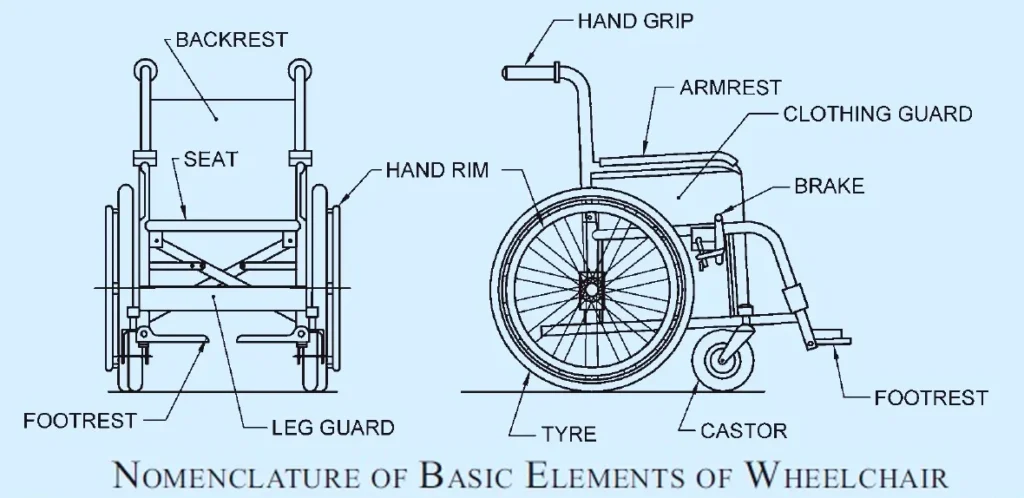
- Some of the dimensions of a standard wheelchair are extremely important and helps to arrive at requirements for space allowance, reach range, etc., of a wheelchair user.
- Electric wheelchair may be of a large dimension, much heavier and do not have the same manoeuvrability/capability as manual wheelchairs.
- Manual wheelchair dimensions are as follows figure shown below.
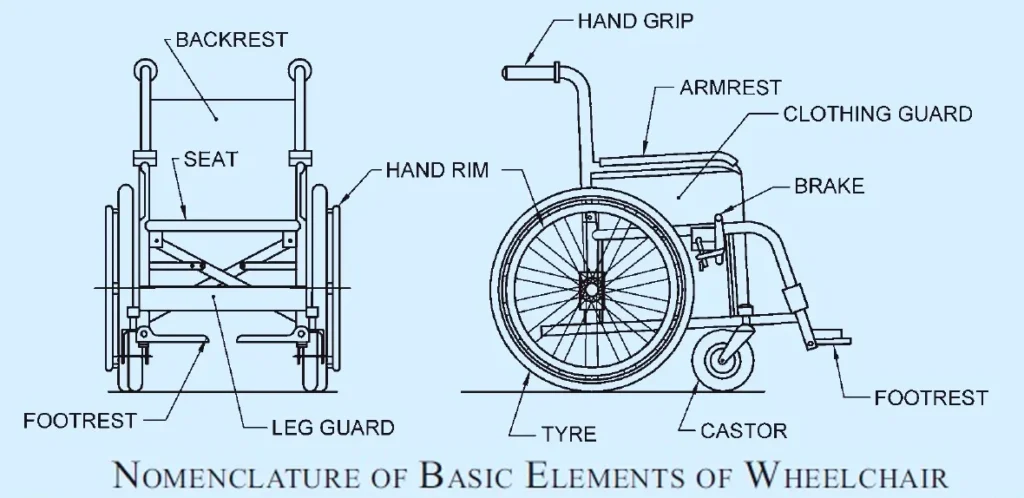
- Overall length: 1 000 mm -1100 mm
- Overall width, open: 650 mm – 720 mm
- Overall width,: 300 mm – 330 mm folded
- Overall height: 910 mm – 950 mm
- Seat height from: 480 mm – 510 mm floor at the front
- Distance between: 400 mm – 450 mm seat and footrest
- Arm rest height: 220 mm – 230 mm from seat
- Seat depth: 420 mm – 440 mm
- Clearance of foot: 90 mm – 200 mm rest from floor
- Clearance of frame: 90 mm, Min from floor
- Wheelchair footrest: 350 mm (deep)
- Wheelchair castor: 12 mm width
- Weight of the: 25 kg, Max wheelchair (basic model). The following form important considerations in deciding various space requirements to ensure functionality for wheelchair users:
- Arm rest height from floor: 760 mm
- Lap height: 675 mm
Note
- The dimensions given above are from the point of view of better understanding and appreciation of various needs emanating therefrom.
- However, considering various aspects including diversity of population, stature, age, gender, etc., the dimensions and ranges thereof as may be applicable have been prescribed in these provisions given hereinafter.
- A wheelchair has a footplate and leg rest attached in front of the seat.

- The footplate extends about 350 mm in front of the knee.
- The footplate may prevent wheelchair users from getting close enough to an object/site.
- Hence, at least 350 mm deep and 700 mm high space under a counter, stand, etc., shall be provided.
ii) Clear floor space for wheelchair user
- The minimum clear floor or ground area required for accommodating a single, stationary wheelchair and occupant is 900 mm × 1200 mm as shown in the figure.
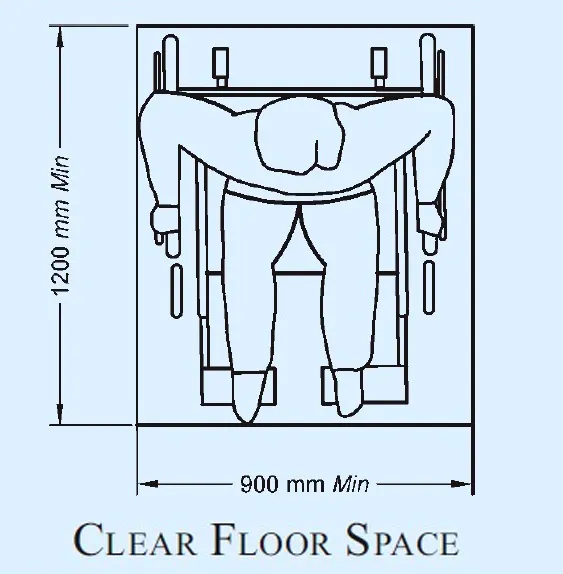
- Where transfer from the wheelchair is involved, the clear space should preferably be 900 mm × 1350 mm.
iii) Circulation dimensions
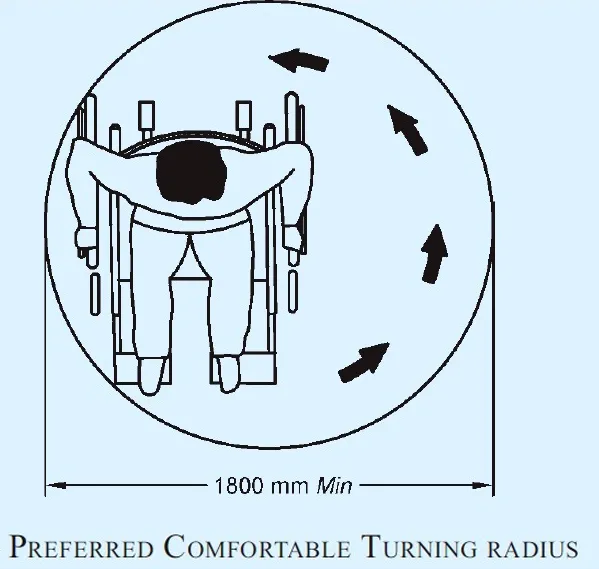
- The minimum clear floor ground area for a wheelchair to turn is 1500 mm, whereas comfortable is 1800 mm and it is ideal to provide 2000 mm as shown in the figure.
iv) Space allowance for crutch users
- Although people who use walking aids can manoeuvre through door openings of 900 mm clear width, they need wider passageways for comfortable gaits as shown in the figure.
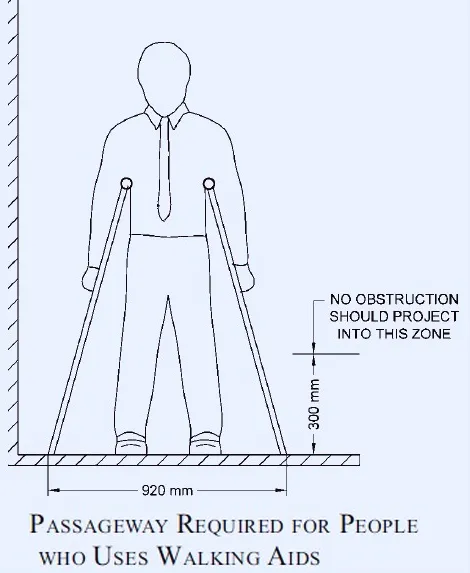
- Crutch tips, often extend down out at a wide angle, and are hazardous in narrow passageways where they might not be seen by other pedestrians.
v) Space allowance for white cane users
Following shall be ensured for white cane users:
- Protruding objects, such as directional signs, tree branches, wires, guy ropes, public telephone booths, benches and ornamental fixtures shall be installed with consideration of the range of the white cane of a person with vision impairment.
- A barrier to warn blind or visually impaired person shall be provided under stairways or escalators so that they don’t accidently enter into them.
- Walkways, halls, corridors, passageways, aisles, or other circulations spaces shall have clear headroom to minimize the risk of accidents.
- Adequate space allowance should be made considering that the radial range of white cane is a band of 900 mm wide as shown in the figure.
- Any obstacle above 300 mm cannot be detected by the white cane.

vi) Reach range
- A wheelchair users movement pivots around its shoulders as shown in the figure.

- The range of reach (forward and side; with or without obstruction) of a wheelchair user, as given below – 7, 8 shall be taken into consideration.
vii) Forward reach
- The maximum forward reach without obstruction is 1200 mm from the floor and the minimum forward reach without obstruction is 400 mm from the floor as shown in the figure.
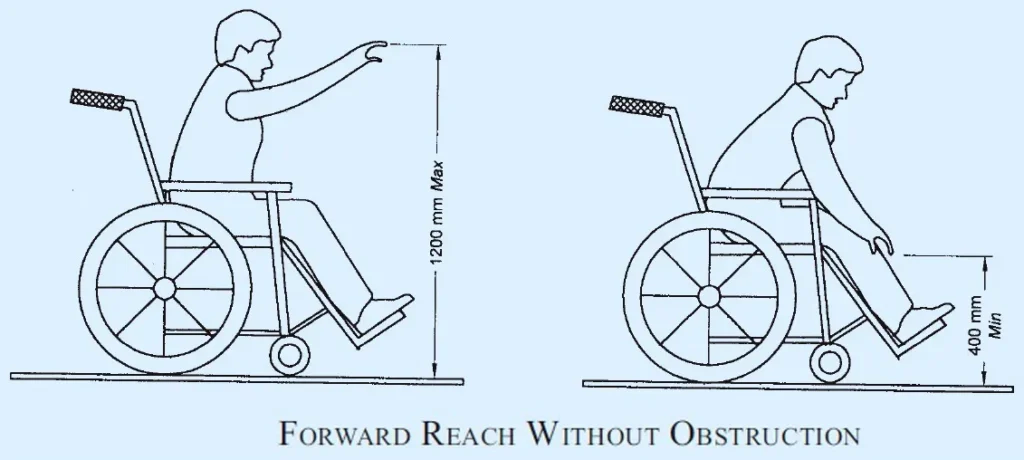
- The maximum forward reach over an obstruction is 1000 mm from the floor as shown in figure below, which also indicates the touch reach and grasp reach.

viii) Side reach
- The maximum side reach without obstruction is 1300 mm from the floor and the minimum side reach is 250 mm as shown in figure below.

- The maximum side reach over an obstruction of size 860 mm high × 500 mm deep is 1200 mm from the floor as shown in figure below, which also indicates the touch reach and grasp reach.

ix) Common reach zone
- As part of the common reach zone, the comfortable reach zone when seated on a wheelchair is between 900 mm and 1200 mm and the maximum reach zone is between 1200 mm and 1400 mm as shown in figure below.
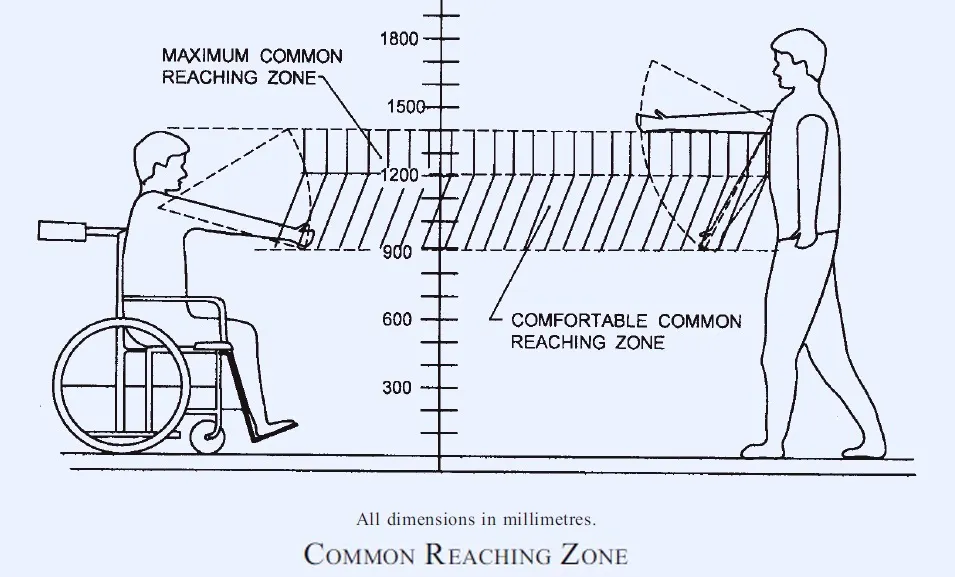
x) Vision zone

- Different fields of vision are given in figure above. All signage should be designed based on these dimensions.
- Map and information panels along pathways shall be placed at a height between 900 mm and 1800 mm as shown in figure below.
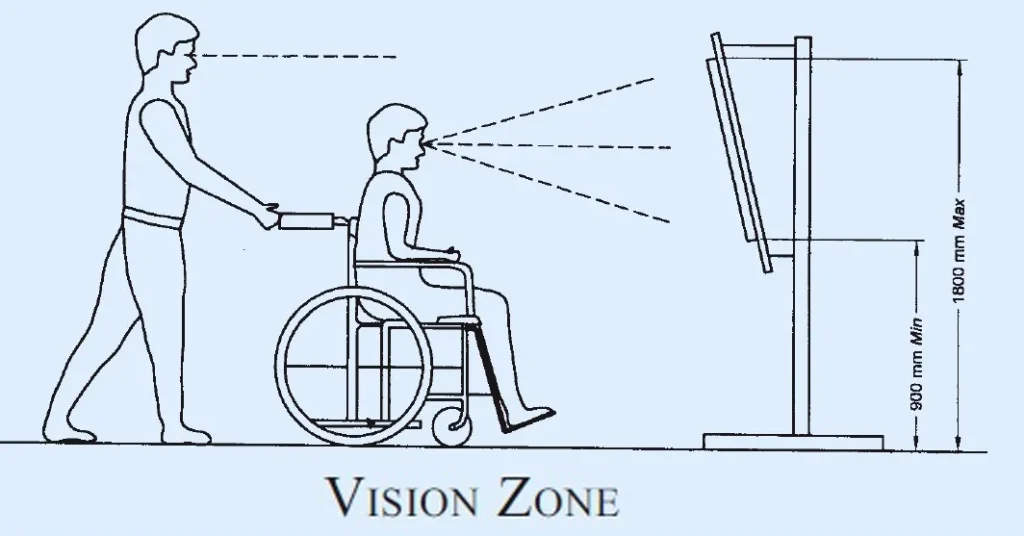
- The smallest letter shall not be less than 15 mm.
3) Heights and widths
i) Wheelchair users
- The average height of a person seated on a wheelchair is generally less than 1200 mm.
ii) Standing person
- The average height of a standing person is generally less than 2000 mm.
iii) Height of controls
- Height of controls: 400 mm – 1200 mm from floor level
- Height for switches: 400 mm – 500 mm (power)
- Height for switches: 800 mm – 1200 mm (lights)
- Height of door: 800 mm – 1100 mm handles
- Opening controls for: 800 mm – 1100 mm windows
- Space required under: 350 mm deep the counter for wheelchair footrest
iv) Entrance/exit door
- Minimum width of entrance/ : 900 mm exit door as shown in figure below.

- Minimum front approach: 600 mm doorways space as shown in figure below.

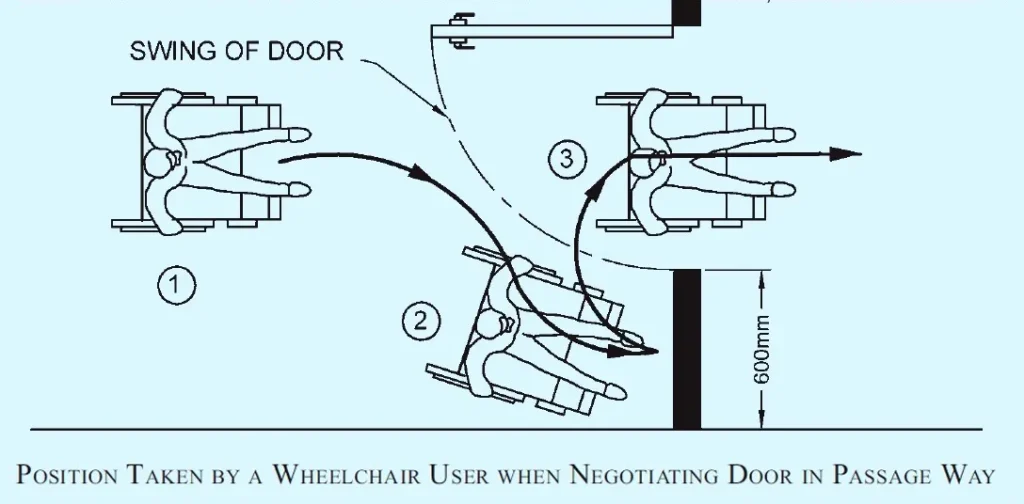
- Minimum latch side approach: 1250 mm doorways space as shown in figure below.

It is important to note that these are minimum guidelines and providing additional space for mobility devices can make a significant difference in accessibility and ease of movement for people with disabilities.